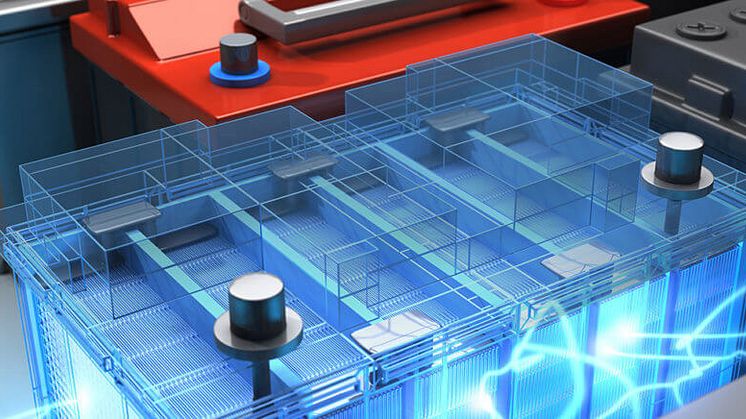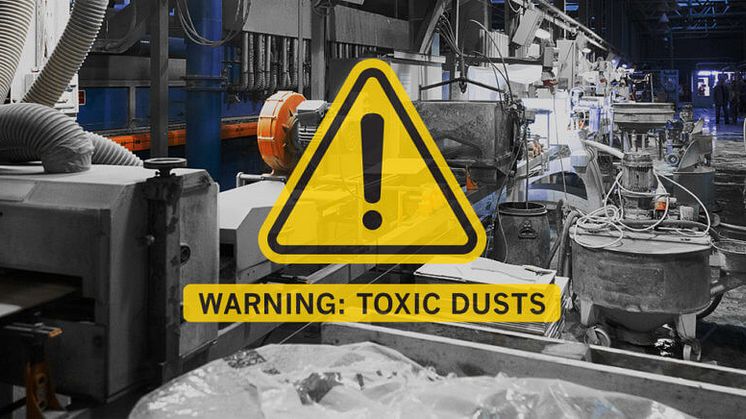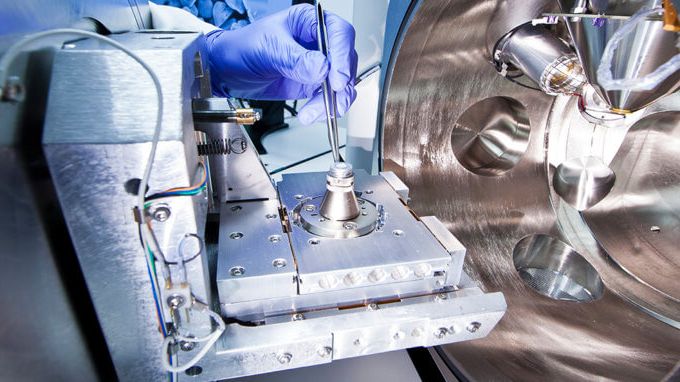
Blog post -
The Importance of Safe Dust Collection in Battery Manufacturing
The processes involved in manufacturing batteries can release particles into the air – lead dust, nickel, cobalt, aluminum and other materials that are combustible and/or toxic. Though these dusts and fumes are generally emitted near process equipment, once in the air they disperse and eventually settle on equipment, floors, walls and other surfaces.
Tiny dust particles can be distributed far and wide in plants by drafts, manufacturing traffic, sweeping, vacuuming and other housekeeping efforts. This multiplies the opportunities for occupational exposure exponentially. The particles can also attach themselves to acid or water mists, becoming airborne again and a threat to workers and the environment.
DUST FROM RECHARGEABLE AUTOMOTIVE BATTERY PRODUCTION
All rechargeable batteries used in automobiles have electrochemical cells with an anode, cathode and electrolyte. There are several types— lead-acid, NiCd (Nickel Cadmium), NiMH (Nickel Metal Hydride) or Lithium ion, but all types use nickel and combustible and/or toxic metals. For example, NCA (Nickel Cobalt Aluminum) ion batteries uses lithium nickel cobalt aluminum for the cathode, a carbon-based metal like graphite for the anode and lithium salt as an organic solvent. When split, pressed, etc., these materials become fine powders that can easily become airborne.
Nickel and cobalt are on the Hazardous Substance List and are regulated by OSHA and cited by ACGIH, DOT, NIOSH, DEP, IARC and EPA. They are on the Special Health Hazard Substance list because it is a carcinogen and is flammable. Their PEL is .1 mg/m3 averaged over an 8-hour work shift. Aluminum dust is also combustible and can be toxic at high levels. All of these metal dusts must be collected from the air, safely contained and disposed of correctly.
DUST FROM LEAD BATTERY PRODUCTION
Many acid battery manufacturing processes create lead dust, which is extremely toxic to humans. It causes a variety of health hazards for workers if not captured and safely contained:
- Impaired blood production
- Loss of appetite
- Metallic taste in the mouth
- Anxiety
- Nausia and Constipation
- Dizziness and headaches
- Excessive fatigue, weakness and numbness
- Insomnia,
- Muscle and joint pain
- Tremors
- Hyperactivity
- Severe abdominal pain
PRODUCTION PROCESSES THAT PRODUCE LEAD DUST:
- Battery plate manufacturing
- Battery plate transport
- Plate Drying in Oven
- Handling lead pots with dross
- Lead scrapping
- Torching and burning lead pots
- Oxide handling
- Reclaiming batteries
HEALTH HAZARDS
Lead dust in the work environment creates health hazards for workers. Lead can be absorbed in the body by swallowing or inhaling. Once in, it circulates though the bloodstream to organs and tissues where it is stored – sometimes permanently. Autopsies have found lead in the human brain, bone marrow, liver, kidney and even teeth.
Lead causes short-term and long-term damage to the body. In the short term, body function is impaired, but in the long term, severe diseases can emerge. According to the OSHA website, lead is a “systemic poison, which when taken in large doses, can kill a person in a matter of days.”
The main target for lead toxicity is the nervous system. It can also cause acute encephalopathy to the brain and cardiorespiratory arrest, seizures, coma and death. It can cause anemia, urinary problems and reproductive problems. Whether lead exposure occurs over a short or long period of time, it is cumulative. Eventually the amount of lead in the body will be sufficient to cause sickness or disease.
OSHA STANDARDS FOR LEAD DUST
Battery manufacturing plants are required to comply with specific Federal OSHA standards for general industry (29 CFR 1910) including Subpart Z for toxic and hazardous substances. OSHA addresses lead specifically in this document. Battery manufacturers must follow standards for personal protective equipment for eyes and face, respiratory tract and head, and feet and hands.
In addition to Federal standards, manufacturers in 28 states must follow OSHA-approved State Plans that are at least as stringent as OSHA’s. The state plans may also have different requirements than Federal plans.
OSHA requires manufacturers to use particulate sampling techniques to determine exposure to lead. Some employers may also be required to perform biological monitoring to determine if employees have lead in their bloodstream.
THE ROLE OF DUST AND FUME COLLECTION
OSHA recommends that facilities maintain workplace air quality through “engineering controls” where feasible. These controls may include adding enclosures to process equipment, ventilation of factory through a dust collection system, and new handling procedures to transport the collected dust to storage, recycle streams or off-plant receivers.
Dust collection systems are the most cost-effective way to limit workers’ exposure to lead dust and improve air quality. They work around the clock, using advanced filtration technology to safely capture and contain airborne contaminants.
For example, when factory air is routed through a high-quality dust collection system like the Gold Series X-Flo system, high-efficiency filter cartridges safely capture lead. The X-Flo is not a “one size fits all” system; it is sized and specified for each specific process and dust type. That is particularly important when handling toxic dusts like lead.
Dust collection systems must also be maintained properly. Filters must be changed out correctly and often enough to prevent the system from breaking down and releasing the captured lead into the ambient environment. A bag-in/bag-out system may be required to safely change filters. This protects maintenance personnel from exposure and also prevents dust from escaping back into the process area.
High-efficiency cartridges are generally required in battery manufacturing applications, and specific filter media may also be required. For example, HemiPleat eXtreme filter cartridges are used effectively in systems that capture dust from cathode splitting processes. These filters use blended cellulose and polyester fiber media that is coated with nanofibers for superior dust release.
OSHA provides an eTool that provides a visual of the engineering and work practice controls used in battery manufacturing. The tool discusses controls for the maintenance, oxide and grid production (lead pot and dross hood), plate processing (including grid pasting, hydrosetting, parting, enveloping, wrapping), battery assembly (group drop tamping/burner hood), repair and reclaim (scrap pot and dross hood), and workbench processes.

COMBUSTIBLE DUST CONCERNS
Lithium, silicon powder, nickel, cobalt, aluminum and lead dust are also combustible. This means that your facility may also be governed by the National Fire Protection Association standards. Specifically, NFPA 652 may require you to have your dust tested for explosibility (Kst value) and complete a Dust Hazard Analysis.
To mitigate combustible dust risks, your dust collection system might require explosion protection such as explosion venting, chemical isolation or chemical suppression. Certain applications might require HEPA after-filters that can catch any lead dust in the airstream that gets past the primary filters. In some cases, it is possible to safely vent your air outside or return it to the plant, but efficient HEPA after-filters might be required to keep the dusts within safe limits.
OTHER HAZARDS IN BATTERY MANUFACTURING
Besides lead dust, workers might be exposed to toxic materials like cadmium, arsenic, antimony (stibine), mercury, nickel, selenium, silver and zinc. Workers can also be exposed to reactive chemicals, such as sulfuric acid, solvents, acids, caustic chemicals and electrolytes.
No matter what type of toxic or combustible dust you are producing or handling, the experts at Camfil are ready to help you specify the system that will keep your workers safe and your facility in compliance. Selecting the appropriate equipment can be a daunting task, but we can help you through the critical design phase. We help assess your system, applications and physical space to determine the best solutions for meeting your production goals.
CAMFIL WILL WORK WITH YOU TO ANSWER QUESTIONS LIKE:
- What is the best type of cartridge and filter media?
- Is an intermittent-duty, continuous-duty or variable-frequency collector best?
- Are explosion protection controls required?
- Which style and size configuration are best?
- Will the dust collector use compressed air?
For assistance selecting the best dust collector or filter cartridges for your specific paper scrap application, contact a Camfil dust collection expert.


